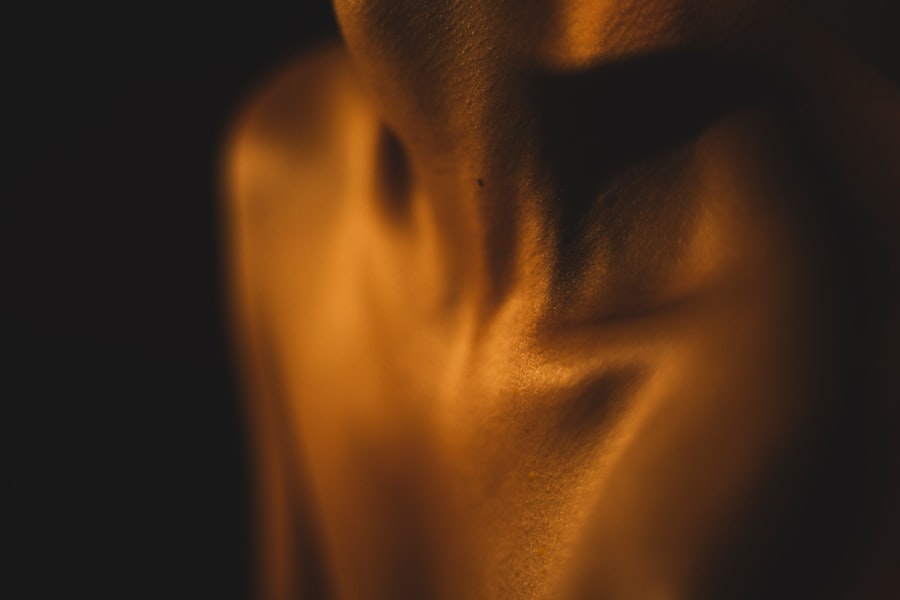When it comes to hair removal, stubble can be a common concern for many individuals. Stubble refers to the short, coarse hair that remains after shaving, often leading to an undesirable texture and appearance. For those who prefer a smoother look, traditional methods like shaving can be time-consuming and may not provide the long-lasting results you desire.
This is where laser hair removal comes into play. It is a popular option for those looking to eliminate unwanted hair, including stubble, with a more permanent solution. Laser hair removal works by targeting the pigment in hair follicles with concentrated light beams.
This process effectively destroys the hair at its root, significantly reducing regrowth over time. Unlike shaving, which only cuts hair at the surface level, laser treatment can lead to a more permanent reduction in hair density and thickness. As you consider this method, it’s essential to understand how it works and what it entails, as well as the benefits it can offer in comparison to traditional hair removal techniques.
Key Takeaways
- Stubble is the short, prickly hair that grows back after shaving or other hair removal methods
- Laser hair removal works by targeting the hair follicles to reduce the growth of stubble over time
- Before your laser hair removal appointment, it’s important to avoid sun exposure and certain hair removal methods
- During the session, you may feel a slight discomfort as the laser targets the hair follicles
- After laser hair removal, you may experience some redness and irritation, but this should subside with proper post-treatment care
Preparing for Laser Hair Removal: What to Do Before Your Appointment
Consultation with a Qualified Practitioner
Schedule a consultation with a qualified practitioner to discuss your goals, medical history, and any concerns you may have. This initial meeting is an excellent opportunity to ask questions about the procedure and what to expect during and after treatment.
Avoid Interfering Hair Removal Methods
In the weeks leading up to your appointment, avoid any methods of hair removal that could interfere with the laser treatment. This includes waxing, plucking, or using depilatory creams, as these methods remove hair from the root and can hinder the effectiveness of the laser.
Proper Preparation for Your Session
Instead, focus on shaving the area a day or two before your session. This will ensure that the laser can effectively target the hair follicles without any interference from longer hair above the skin’s surface.
What to Expect During Your Laser Hair Removal Session

As you arrive for your laser hair removal session, you may feel a mix of excitement and nervousness. It’s completely normal to have these feelings, especially if it’s your first time undergoing this treatment. Once you’re settled in, your practitioner will likely provide protective eyewear to shield your eyes from the laser light.
They may also apply a cooling gel or device to help minimize discomfort during the procedure.
You may feel a sensation similar to a rubber band snapping against your skin as the laser targets each hair follicle.
While some individuals report mild discomfort, many find it manageable and worth the long-term benefits. After the session is complete, your practitioner will provide you with aftercare instructions to ensure optimal healing and results.
Post-Treatment Care: How to Manage Stubble and Irritation
| Post-Treatment Care | Stubble Management | Irritation Management |
|---|---|---|
| Use a gentle exfoliating scrub | Regularly trim with a razor or electric shaver | Avoid tight clothing and harsh fabrics |
| Apply moisturizer to soothe the skin | Consider using a soothing aftershave balm | Use aloe vera or other calming products |
| Avoid excessive sun exposure | Use a sharp, clean razor to prevent irritation | Avoid scratching or picking at irritated areas |
After your laser hair removal session, it’s essential to follow proper post-treatment care to manage any potential irritation and ensure effective results. You may notice some redness or swelling in the treated area, which is entirely normal and should subside within a few hours to a couple of days. To alleviate any discomfort, applying a cool compress can be beneficial.
Additionally, over-the-counter pain relievers may help if you experience any lingering discomfort. As for managing stubble after treatment, it’s important to resist the urge to shave or wax immediately following your session. Instead, allow any remaining hair to fall out naturally over the next few weeks as your body sheds the treated follicles.
You might notice some stubble during this time; however, this is a sign that the treatment is working. Keeping the area clean and moisturized will also aid in recovery and help minimize irritation.
Understanding the Results: What to Expect After Laser Hair Removal
One of the most exciting aspects of laser hair removal is witnessing the results unfold over time. After your initial treatment, you may not see immediate results; however, as weeks pass, you’ll likely notice a significant reduction in hair growth in the treated area. Many individuals experience smoother skin with less stubble than before, which can be incredibly satisfying.
It’s important to remember that multiple sessions are typically required for optimal results. Most practitioners recommend a series of treatments spaced several weeks apart to target hair in different growth cycles effectively. As you progress through your sessions, you should see a gradual decrease in hair density and thickness, leading to long-lasting smoothness that can save you time and effort in your grooming routine.
Potential Side Effects and Risks of Laser Hair Removal for Stubble

While laser hair removal is generally considered safe for most individuals, it’s essential to be aware of potential side effects and risks associated with the procedure. Common side effects include temporary redness, swelling, or mild discomfort in the treated area. These symptoms usually resolve within a few hours or days but can vary depending on individual skin sensitivity.
In rare cases, more severe side effects may occur, such as blistering or changes in skin pigmentation. It’s crucial to choose a qualified practitioner who uses appropriate technology and techniques tailored to your skin type to minimize these risks. Additionally, discussing any pre-existing skin conditions or concerns during your consultation can help ensure that laser hair removal is a suitable option for you.
Comparing Laser Hair Removal to Other Hair Removal Methods for Stubble
When considering hair removal options for stubble, it’s essential to weigh the pros and cons of various methods available today. Traditional shaving is often quick and convenient but requires frequent maintenance and can lead to issues like razor burn or ingrown hairs. Waxing offers longer-lasting results but can be painful and may not be suitable for sensitive skin types.
While it may require an upfront investment and multiple sessions, many individuals find that the long-term benefits outweigh these initial costs. Ultimately, choosing the right method depends on your personal preferences, pain tolerance, budget, and desired results.
Frequently Asked Questions about Stubble and Laser Hair Removal
As you consider laser hair removal for stubble, you may have several questions about the process and its effectiveness. One common inquiry is whether laser hair removal is suitable for all skin types and hair colors. While advancements in technology have made it possible for many individuals to benefit from this treatment, those with lighter hair colors may require specialized lasers for optimal results.
Another frequently asked question revolves around how long results last after completing a series of treatments. While many individuals experience significant long-term reduction in hair growth, some may require maintenance sessions every year or so to keep stubble at bay completely. Understanding these aspects can help you make an informed decision about whether laser hair removal is right for you.
In conclusion, navigating the world of stubble and laser hair removal involves understanding the basics of how it works, preparing adequately for your appointment, managing post-treatment care, and setting realistic expectations for results. By considering these factors and consulting with a qualified practitioner, you can embark on a journey toward smoother skin with confidence.
If you have stubble when going in for laser hair removal, it can affect the effectiveness of the treatment. Stubble can interfere with the laser’s ability to target the hair follicles, resulting in less effective results. To learn more about the importance of proper hair removal techniques before laser treatment, check out this article on inlaserhairremoval.com.
FAQs
What is laser hair removal?
Laser hair removal is a cosmetic procedure that uses a concentrated beam of light (laser) to remove unwanted hair. The laser targets the pigment in the hair follicles, damaging them and inhibiting future hair growth.
Can you have laser hair removal with stubble?
It is generally not recommended to have laser hair removal with stubble. The laser targets the pigment in the hair follicle, and stubble can interfere with the effectiveness of the treatment.
What happens if you have stubble for laser hair removal?
If you have stubble for laser hair removal, the effectiveness of the treatment may be reduced. The laser may not be able to effectively target the hair follicles, leading to less effective results.
Should I shave before laser hair removal?
It is recommended to shave the area to be treated before laser hair removal. Shaving removes the hair above the skin, allowing the laser to more effectively target the hair follicles.
Can I wax or pluck before laser hair removal?
It is not recommended to wax or pluck before laser hair removal, as these methods remove the hair from the follicle, which is the target of the laser. Shaving is the preferred method of hair removal before laser treatment.





